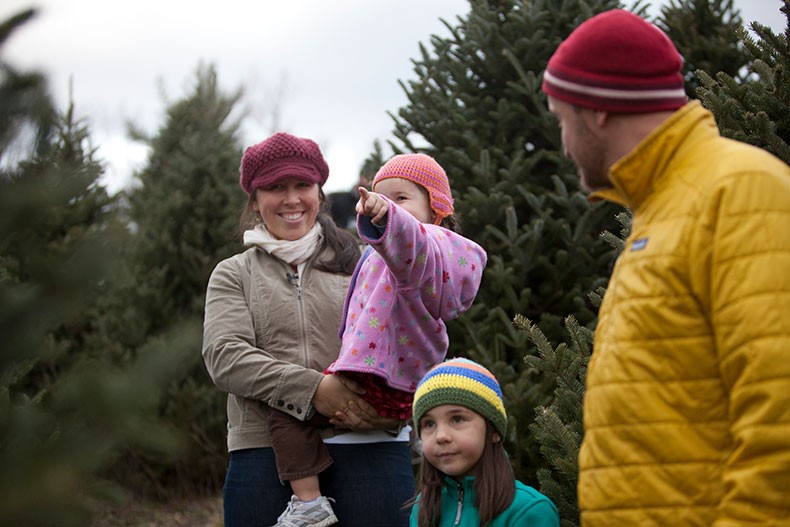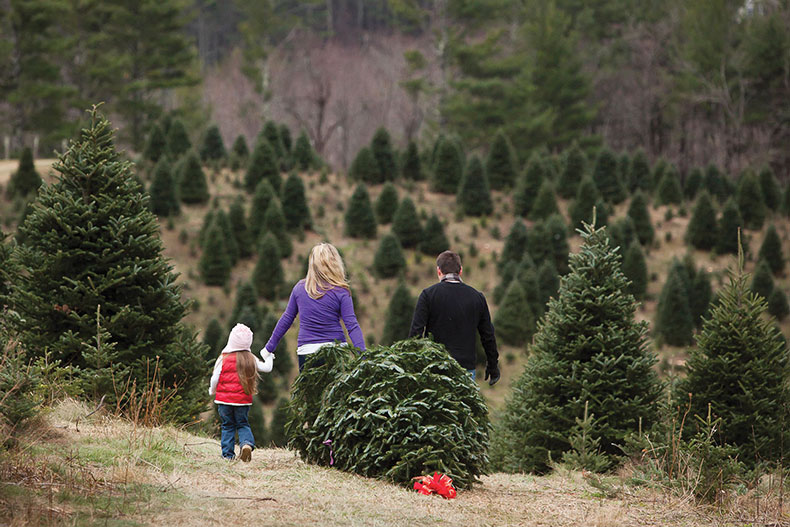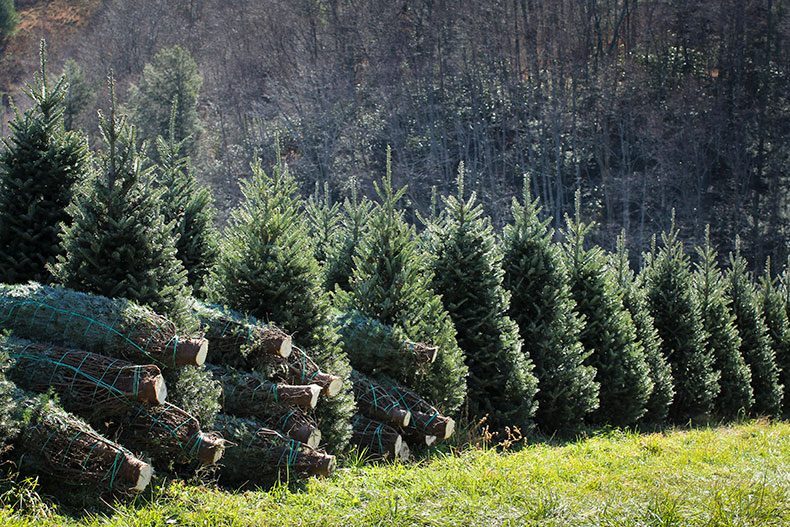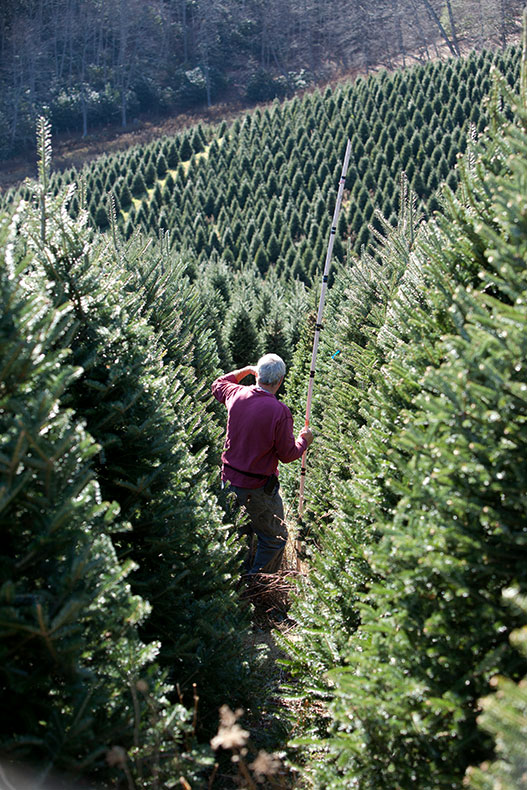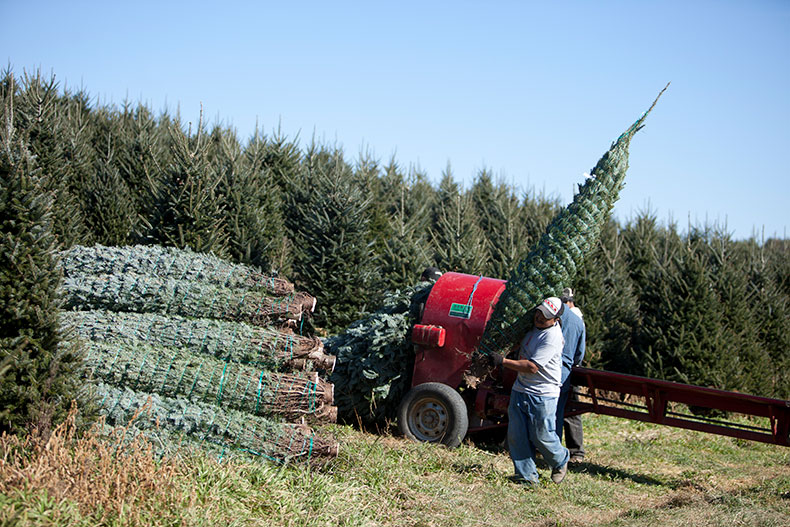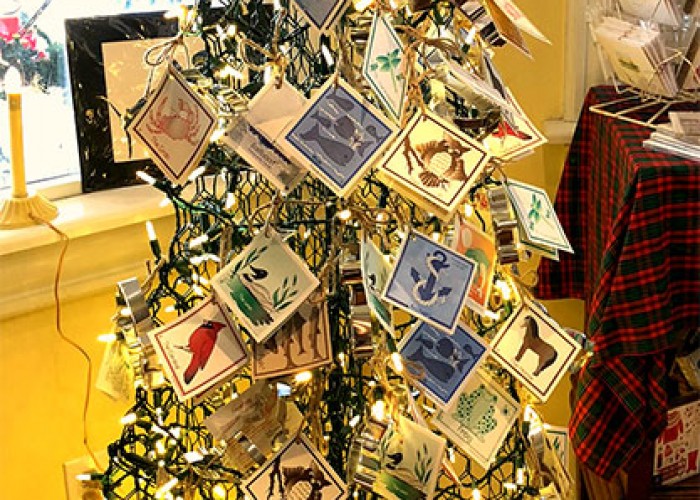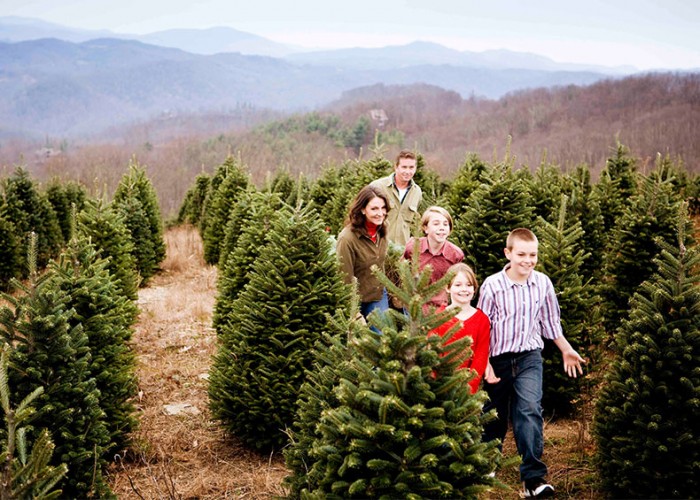Fraser Firs: North Carolina’s Christmas Gift to the Nation
NC trees are big business
By Margaret Buranen | Photos courtesy of NCCTAHere in North Carolina, Christmas trees are big business. How big? North Carolina growers produce over 20 percent of all of the live Christmas trees sold in the United States.
Those tree sales exceeded $86 million in 2017, according to a USDA agriculture census for that year, and that figure does not include sales of value-added products produced by the North Carolina Christmas tree growers, such as roping, wreaths, swags and other evergreen decorations for tables and mailboxes.
“Native to the Western Appalachian Mountains, Fraser firs grow only at elevations of 3,000 feet and higher.”
In eastern North Carolina, cedars and pines are grown for Christmas trees. Many of the growers who raise these trees serve their customers’ wishes by bringing in Fraser firs to sell, too.
Fraser firs typically make up 94% of all Christmas trees grown in North Carolina. These stately evergreens are often chosen as the official White House Christmas tree. It’s really not surprising that the Fraser fir is America’s favorite kind of Christmas tree.
This beautiful tree “has incomparable needle retention, pliable — yet strong — branches for heavy ornaments, and soft, pleasant-to-touch, dark green needles,” says Jennifer Greene, Executive Director of the North Carolina Christmas Tree Association (NCCTA) in Boone.
Native to the Western Appalachian Mountains, Fraser firs grow only at elevations of 3,000 feet and higher. It takes eight to 12 years to produce a tree that is six to seven feet tall, the height at which the trees are usually cut for Christmas sales.
Grinches of the insect world
Fraser firs grow tall and majestic, but their two worst enemies are tiny. Growers need magnifying glasses when they inspect their trees for the balsam woolly adelgid. Without a magnifying lens, it is easy to overlook the adelgids because they can be mistaken for algae or a dab of white sap.
This invasive insect from Europe feeds on the bark of Fraser firs. When it gets into trees it stops their ability to move water and nutrients, and the trees die.
Another pest, the elongate hemlock scale, is just large enough to be seen by the naked eye. This invasive insect from China and Japan feeds on the underside of Fraser fir needles.
Jill Sidebottom, an area extension specialist with North Carolina State University, helps Christmas tree growers manage the threat that the insects pose to their trees. She says if either insect species is found, most insecticides are effective, though not necessarily the preferred method of control.
“Spraying is labor-intensive and expensive,” she notes.
Instead, Jill advises Christmas tree growers to use what’s known as integrated pest management. This ecosystem-based strategy involves considering all the factors that are involved in growing a healthy Fraser fir.
“How far apart the trees are planted, how much fertilizer is applied, how much rainfall will occur, how tall ground cover grows — all of these affect whether you get pests or not,” Jill explains. “Even with these pests, our growers are using fewer pesticides. By doing integrated pest management they’ve reduced their use of herbicides and pesticides by 75 percent.”
Hands-on care
Keeping the Fraser firs pest free until they have time to grow tall enough to be cut requires frequent and close inspections by the growers. The tree farmers must get close enough to check each tree thoroughly. They follow a pattern, covering each row of trees within a plot, and that takes time.
For the 225 members of the NC Christmas Tree Association, growing these beautiful Christmas trees requires “constant year-around effort,” Jennifer Greene explains.
And by the time a tree is ready to be cut for Christmas, it has likely been visited by the grower more than 100 times. “That’s for shearing, fertilizing, inspecting and applying pesticide if necessary,” she says.
Fraser firs do more than provide the prettiest greenery at Christmas time. They contribute to the concept of a green and sustainable holiday.
“[Fraser firs are] a 100 percent renewable, recyclable resource,” Jennifer says. “They’re grown on family-owned farms, sold all over the United States and shipped overseas.”
About the Author
Margaret Buranen writes from her home in Kentucky.-
More Christmas tree magic
-
Share this story:

